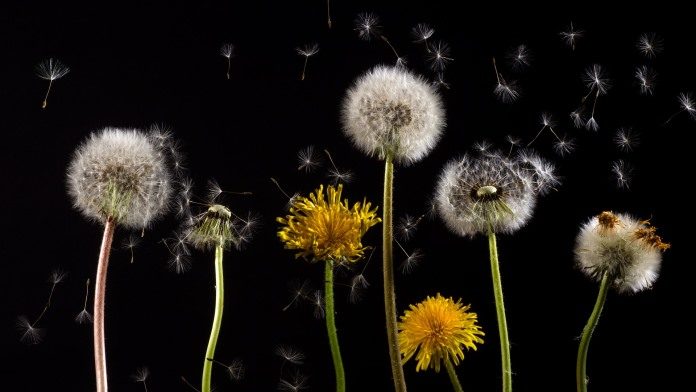Spring can be a beautiful time: the flowers are out, the trees are blooming. But for the 25% of Canadians that suffer from seasonal allergies, it can also be a sniffly, sneezy, mucous-filled nightmare.
Like any allergic reaction, seasonal allergies occur when your immune system, normally there to protect you against foreign invaders like bacteria or viruses, becomes activated by a seemingly harmless substance.
Appalling pollen
The main culprit for seasonal allergies is pollen – a powdery substance produced by plants that essentially contains the plant’s sperm. Many trees, grasses, and other plants like ragweed rely on the wind to spread their pollen, but the chances of a single pollen grain landing on the female sex organ of another plant are very low. To offset this inefficiency, plants maximize the amount of pollen that’s released. Good for the plants, bad for your lungs.
“People are inhaling it constantly and it’s of the correct size to be inhaled into the nose and the lungs,” says Dr. Sue Waserman, Professor of Medicine at McMaster University and President of the Canadian Society of Allergy and Clinical Immunology.
Once a pollen particle enters the mucous of your nose, it encounters specialized immune cells called mast cells. These cells, once sensitized, will recognize the pollen proteins and release a molecule called histamine that leads to symptoms such as itchiness, sneezing, and mucus production.
A chain reaction then activates other immune cells that amplify the response, causing symptoms to last many hours after the initial exposure. Most available allergy medications are anti-histamines, which block this molecule from acting.
But abundance may not be the only reason pollen is such a potent allergen.
“It is now becoming clear that these proteins are not just average proteins,” says Mark Larché, Professor in the Department of Medicine at McMaster University and Canada Research Chair in Allergy and Immune response. For example, some of these proteins can bind bacteria, which provide a trigger to the immune system upon pollen exposure.
Not just your genes
So why do some people get allergies, and others don’t? Like with many diseases, the answer lies both in your genetics and your environment.
“If you have two parents that have allergies the likelihood of you having allergies is high,” explains Dr. Waserman. But you may not be allergic to the same things. “You don’t inherit the specific allergy, what you inherit is the tendency.”
The environment is everything else to which your body is exposed, and includes things like diet, cleanliness, and physical activity. It could also include specific events – if a child with a viral respiratory infection inhales a large dose of pollen, they may end up with pollen allergies in the future.
The hygiene hypothesis
Allergy rates are on the rise. A 2008 World Health Organization report estimated that allergy incidence has risen from 5% to 45% in the last 40 years. One possible reason is something called the hygiene hypothesis – essentially, we’re too clean for our own good.
“The immune system, like a child, needs to be educated as we develop,” says Prof. Larché.
In our sanitation-obsessed society, this doesn’t always happen. We use antibacterial soaps, wash daily, drink processed water, use antibiotics – and as a result our immune systems aren’t exposed to many stimuli.
“What this has led to is an immune system that’s gotten less used to fighting infection and it’s become hypersensitive… it’s looking for other things to fight,” says Dr. Waserman.
Last year, a research team at McGill developed an allergy vaccine that teaches the immune system to tolerate allergens when given at a young age. But perhaps a more organic solution is to re-develop the balance between humans and their microbial friends that has recently been challenged.








































